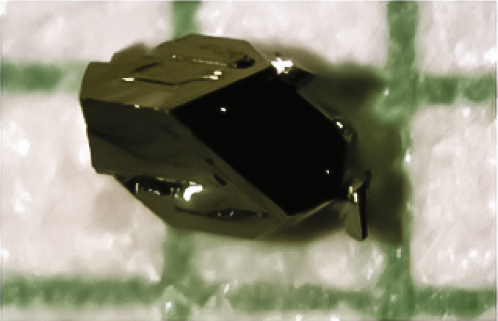
- Select a language for the TTS:
- UK English Female
- UK English Male
- US English Female
- US English Male
- Australian Female
- Australian Male
- Language selected: (auto detect) - EN
Play all audios:
Access through your institution Buy or subscribe Now, Hyunsoo Kim and colleagues have demonstrated superconductivity below 5.4 K in a lab-grown sample of Rh17S15 (pictured), which is also
found in nature as the mineral miassite (H. Kim et al. _Commun. Mater._ 5,17; 2024). Interestingly, the superconducting properties of this compound are quite different from those seen in
most of the known superconductors. In a conventional superconductor, an isotropic energy gap opens around the Fermi energy as soon as the system transitions to the superconducting state.
However, Kim and colleagues found that in the case of miassite, the superconducting gap closes along certain symmetry directions referred to as nodes. This is a preview of subscription
content, access via your institution ACCESS OPTIONS Access through your institution Access Nature and 54 other Nature Portfolio journals Get Nature+, our best-value online-access
subscription $29.99 / 30 days cancel any time Learn more Subscribe to this journal Receive 12 print issues and online access $259.00 per year only $21.58 per issue Learn more Buy this
article * Purchase on SpringerLink * Instant access to full article PDF Buy now Prices may be subject to local taxes which are calculated during checkout ADDITIONAL ACCESS OPTIONS: * Log in
* Learn about institutional subscriptions * Read our FAQs * Contact customer support AUTHOR INFORMATION AUTHORS AND AFFILIATIONS * Nature Physics https://www.nature.com/naturephysics
Debarchan Das Authors * Debarchan Das View author publications You can also search for this author inPubMed Google Scholar CORRESPONDING AUTHOR Correspondence to Debarchan Das. RIGHTS AND
PERMISSIONS Reprints and permissions ABOUT THIS ARTICLE CITE THIS ARTICLE Das, D. Naturally superconducting. _Nat. Phys._ 20, 536 (2024). https://doi.org/10.1038/s41567-024-02484-2 Download
citation * Published: 16 April 2024 * Issue Date: April 2024 * DOI: https://doi.org/10.1038/s41567-024-02484-2 SHARE THIS ARTICLE Anyone you share the following link with will be able to
read this content: Get shareable link Sorry, a shareable link is not currently available for this article. Copy to clipboard Provided by the Springer Nature SharedIt content-sharing
initiative







